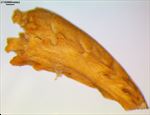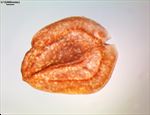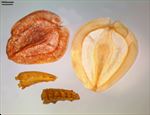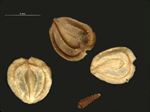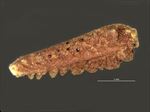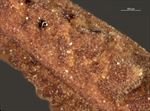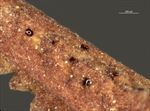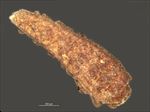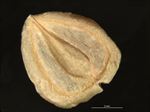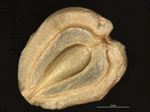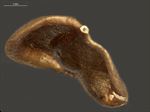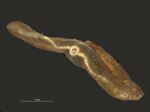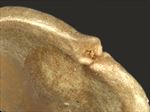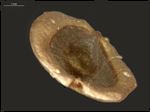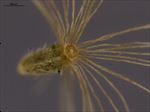Taxonomy
Dimorphotheca sinuata DC., Prodr. 6:72. 1838Common synonyms
Acanthotheca dentata DC.; Acanthotheca integrifolia DC.; Calendula tragus Curtis; Dimorphotheca calendulacea Harv.; Dimorphotheca calendulacea var. calendulacea; Dimorphotheca dentata (DC.) Harv.; Dimorphotheca integrifolia (DC.) Harv.; Dimorphotheca pseud-aurantiaca Schinz & Thell.Common name
Cape marigold
Description
Propagule or dispersal unit is the fruit. The central and marginal fruits of this species are extremely dimorphic. Central fruits are flattened and winged, and appear to vary somewhat in colour. Marginal fruits are club-shaped and vary in colour and surface ornamentation. The pappus is absent.
Central fruits: Fertile part 6-8 mm long, 4.5-7 mm wide, in side view widest in upper part (obovoid), +/- straight, the upper (apical) end narrowing, in cross-section flattened, basal scar (carpopodium) inconspicuous and undifferentiated, central, wings present, 2-3 mm wide, fruit surface light brown or straw or reddish to pink, smooth (except at cellular level), with no hairs (glabrous), thickened margin present, thick margin hairs no hairs (glabrous), longitudinal ribs absent.
Marginal fruits: Fertile part 3-5(-5.5) mm long, 0.5-1.8 mm wide, in side view widest in upper part (obovoid), +/- straight or conspicuously curved, the upper (apical) end suddenly cut off (truncate), in cross-section angular (prismatic), basal scar (carpopodium) inconspicuous and undifferentiated, central or off to the side (oblique) or at least asymmetric, wings absent, fruit surface light brown or straw or dark brown, smooth (except at cellular level), wrinkled or with round protrusions or bumps, with no hairs (glabrous) or papillae (small protuberances), thickened margin absent, longitudinal ribs absent or present, 2-3, their surfaces smooth or toothed, serrated or scale-like, with no hairs (glabrous) or papillae (small protuberances).
Ecology
Annual herb, the seeds of the inner florets winged and wind-dispersed. Warm-temperate to subtropical regions. Found along roads.
Native range
Namibia, South Africa.
